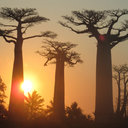[Pathophysiological mechanisms of dengue fever: critical review of current concepts].
Ključne riječi
Sažetak
In the 20th century dengue fever became one of the leading causes of morbidity and mortality throughout the tropics. The dengue virus is an arbovirus transmitted by Aedes mosquitoes. There are four distinct serotypes of dengue arbovirus (DENV-1, 2, 3, 4). According to the World Health Organization, a person infected by one of the dengue viruses can develop symptoms ranging from the classical self-limiting form characterized by high temperature, headache, myalgia, and arthralgia to the severe, potentially fatal, form known as dengue shock syndrome. For over 40 years the main explanation for the pathogenesis of dengue has been based on the "antibody-dependent enhancement" (ADE) concept stating that enhancing antibodies acquired during a primary infection increase the number of infected cells, and thus the level of viremia, during secondary infection. However the severity of dengue is not limited to dengue shock syndrome and there are many cases that do not conform to the ADE concept. A meta-analysis could provide crucial information for resolving this controversy and open the way for development of a monovalent vaccine against the dengue virus as for the closely related yellow fever virus.


